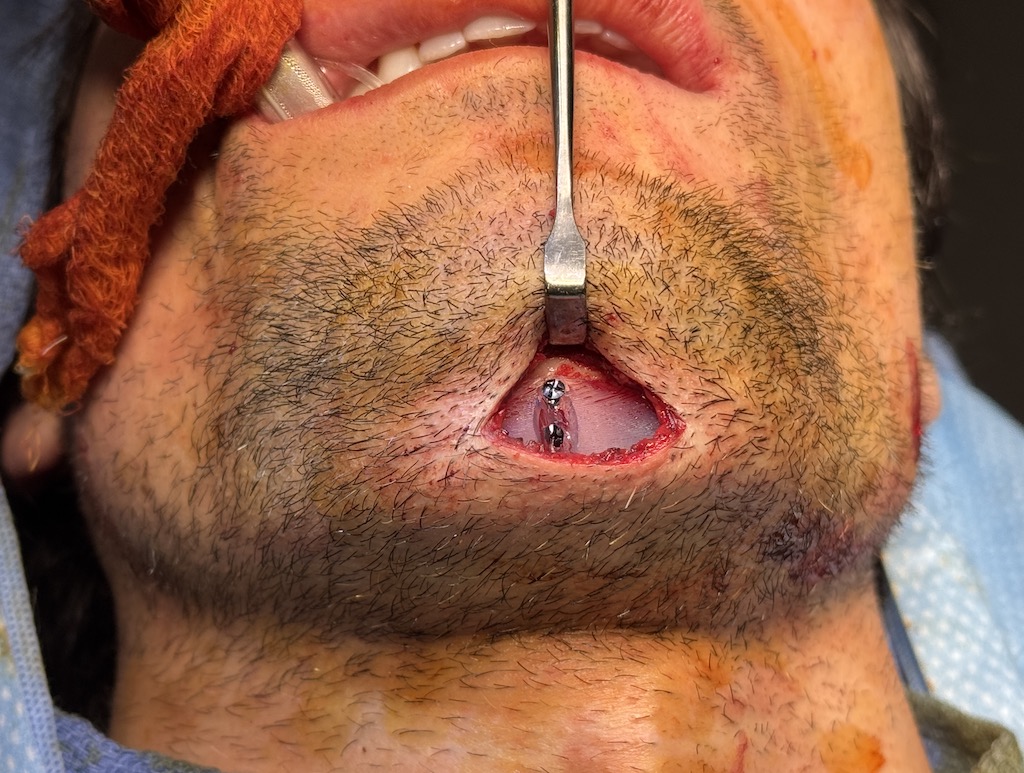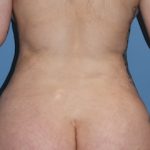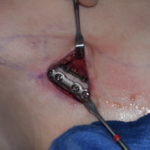
While a custom jawline implant can be designed for many different effects based on the seven numbers which make up its dimensions, some of these aesthetic effects can be derailed by surgical placement. Patients wrongly assume that a custom implant design is easier to place than standard implants and that such a design assures placement on the bone just as seen in the implant design. But this is a wrong assumption as the size of the jawline implant combined with the fact that much of the implant placement on the bone can not be seen in surgery makes undesired placement a real and not uncommon risk of the surgery.
There is a very learned experience to placing a custom jawline implant from which there is limited precedence in doing so. Experience in standard churn and jaw angle implants helps, particularly jaw angle implants, but the sizes and long connected nature of the implant poses new placement considerations.
It always requires a three incisional technique, one anterior and two intraoral posterior incisions. The anterior one can be external submental or intraoral but for many patients, particularly men, the submental approach is better. This provides better visualization of the inferior border of the chin as well as improved dissection back along the body of the mandible. This also better protects the mental nerve from injury by either staying well below it or at least being able to visualize it should the dissection need to go higher and be close to the nerve.
In placement of a custom jawline implant setting the chin portion is the first step done. This not only establishes the midline of the implant but also sets its exact position on the chin bone. The chin position has to be established perfectly for this will control the position of the wings or the jaw angle sides of the implant as it is extends posteriorly. If the midline is off or the chin is tilted this will make the jaw angle placement behind it asymmetric asymmetric.
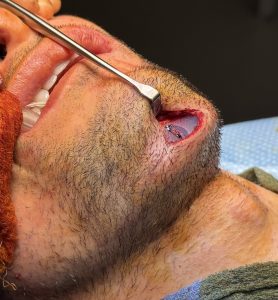
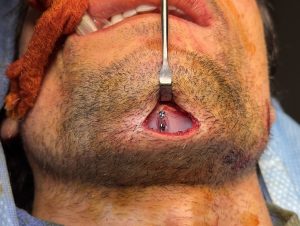
Dr. Barry Eppley
World-Renowned Plastic Surgeon

